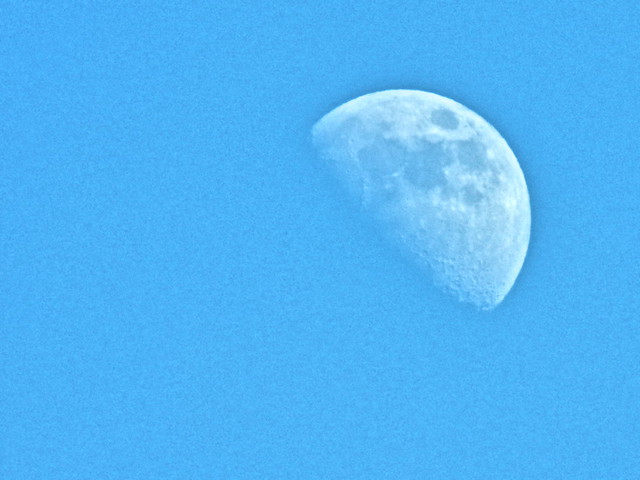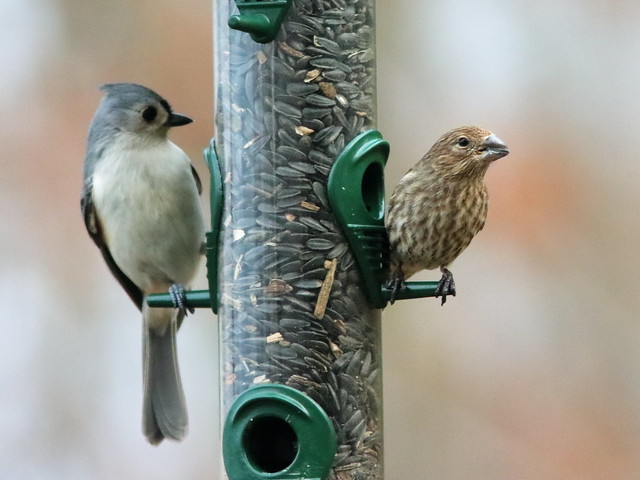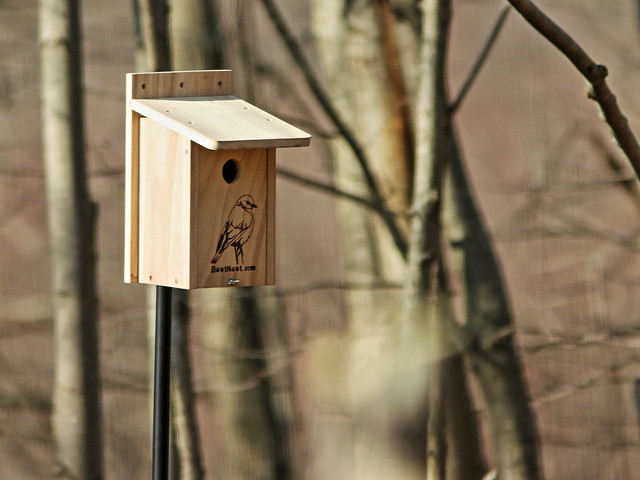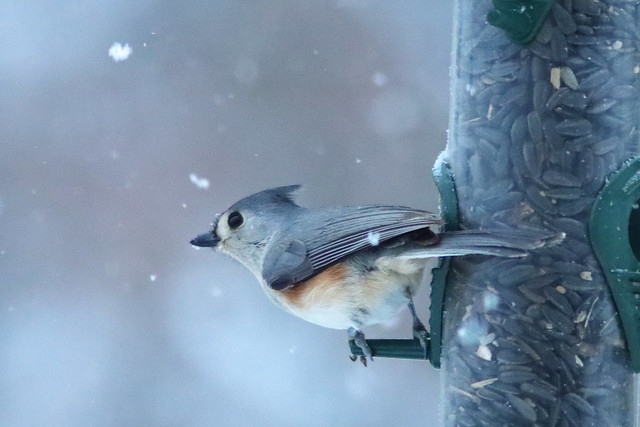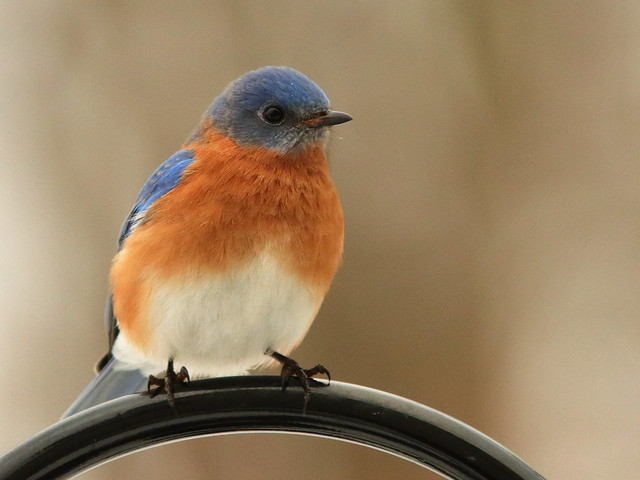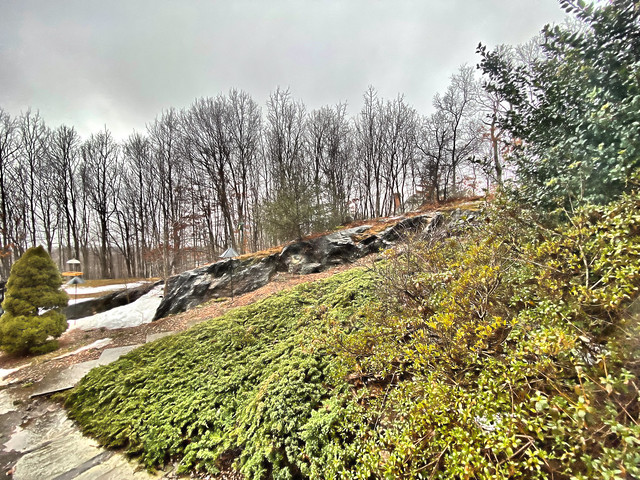Feeder birds attract their most-feared predators. When a hawk is sighted, small birds scatter and hide motionless amid the foliage of the evergreen shrubs and trees. Perhaps the first bird to spot the enemy utters an alarm call, but all seem to flee at once. From my window there is a limited view of the sky and this behavior may also be triggered by overhead predators. Perhaps some of these scatterings for cover are in response to false alarms.
So far I have only seen a single Cooper's Hawk, which specializes in hunting birds, alight briefly nearby. It immediately flew off. There was no time for me to capture a photo of the Cooper's Hawk, but a pair of Red-shouldered Hawks has been very vocal. They are courting, signaling the beginning of breeding season. Although their prey may include birds, they more commonly eat reptiles, insects and small rodents.
During winter when frogs and snakes are not available, the diet of Red-shouldered Hawks may include more birds, especially doves, starlings and sparrows congregated at feeders. So far I have not seen them near our feeders, but their presence above does cause the birds great anxiety.
One sunny afternoon I captured multiple photos of a member of this pair as it called out to its unseen companion:
The bright sky accented its rich coloration:
The Snow Moon was high in the blue sky:
Bluebirds have been singing in the adjacent hardwoods. Aside for one which perched above a feeder, they have not visited to sample the fruit in the platform feeder:
Male Eastern Bluebird:
The female's plumage is more subdued:
A White-breasted Nuthatch rested briefly on the granite ledge..
...and then flew up to pluck a sunflower seed:
Also at the feeder were a Tufted Titmouse and female House Finch:
Thius past week my Son-in-Law and I put up two bluebird houses. They were visited by a pair of bluebirds the very next morning, but so far there is no sign that either or both have been claimed.
I obtaiined a poor photo of the male, through the window. He was resting in a tree next to one of the houses:
Milder weather permitted us to visit Longo Farm, a local preserve. We climbed hills, an unfamiliar experience after living in Florida, but saw few birds:
This morning, she alerted me to the view through the dining room window:
My view of sunrise through the window pane. Note that the leaves of the Rhododendron, after seeming to come to life in yesterday's sunny warmth, once again folded into dormancy overnight in the sub-freezing temperature:
Just after I posted this, another photo opportunity allowed me to capture my first image of a bluebird investigating one of the nest boxes:
= = = = = = = = = = = = = = =
Linking to:
Skywatch Friday
Weekend Reflections
Saturday's Critters
BirdD'Pot
All Seasons
Wordless Wednesday (on Tuesday)
Natasha Musing
Please visit the links to all these posts to see some excellent photos on display
________________________________________________



